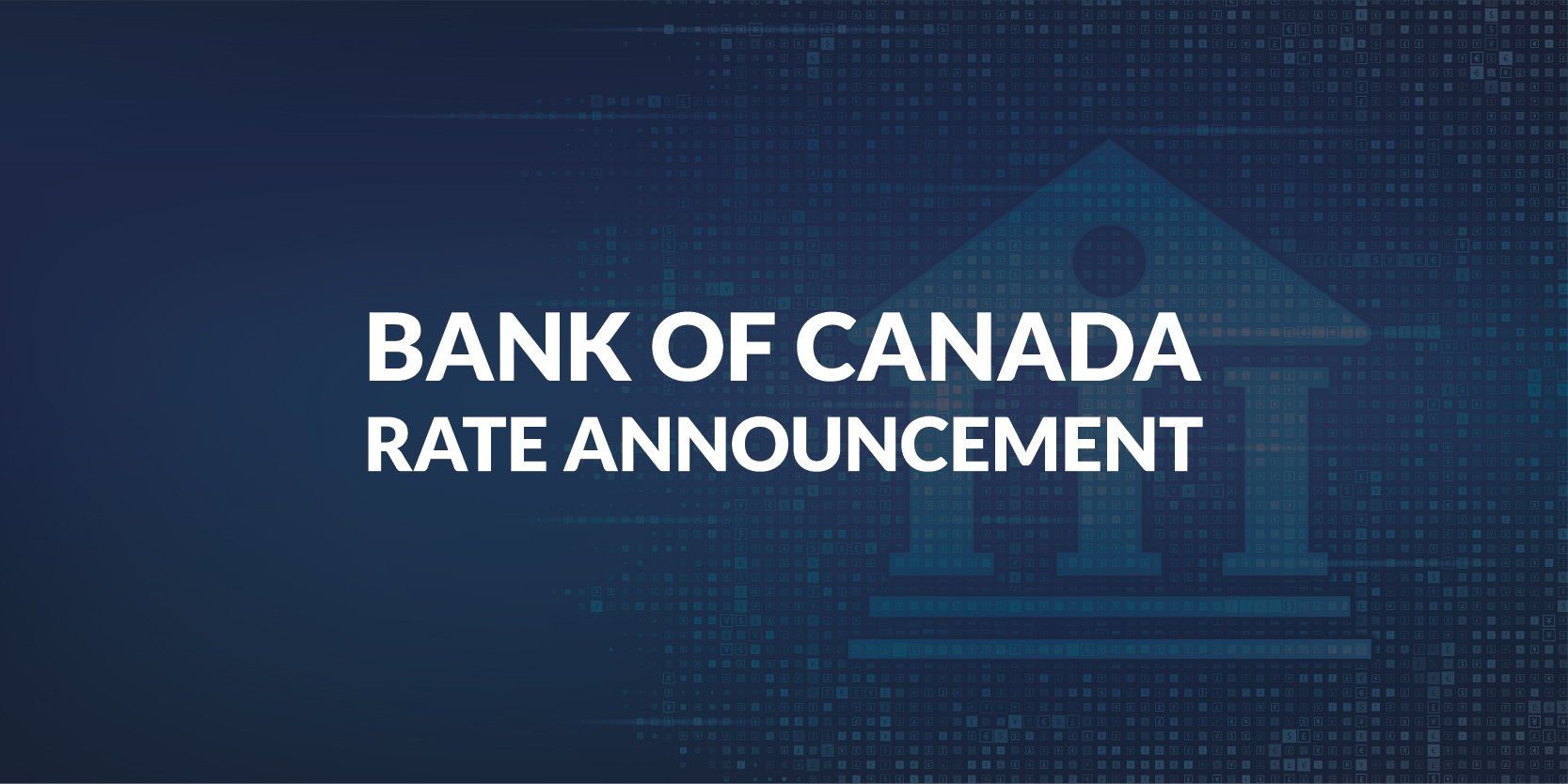Bank of Canada Rate Announcement Jul 14th, 2021

Bank of Canada maintains policy rate and forward guidance, adjusts quantitative easing program.
The Bank of Canada today held its target for the overnight rate at the effective lower bound of ¼ percent, with the Bank Rate at ½ percent and the deposit rate at ¼ percent. The Bank is maintaining its extraordinary forward guidance on the path for the overnight rate. This is reinforced and supplemented by the Bank’s quantitative easing (QE) program, which is being adjusted to a target pace of $2 billion per week. This adjustment reflects continued progress towards recovery and the Bank’s increased confidence in the strength of the Canadian economic outlook.
The global economy is recovering strongly from the COVID-19 pandemic, with continued progress on vaccinations, particularly in advanced economies. However, the recovery is still highly uneven and remains dependent on the course of the virus. The recent spread of new COVID-19 variants is a growing concern, especially for regions where vaccinations rates remain low.
Global GDP growth is expected to reach 7 percent this year and then moderate to about 4 ½ percent in 2022 and just over 3 percent in 2023. This a slightly stronger forecast than the one in the Bank’s April Monetary Policy Report (MPR) and primarily reflects a stronger US outlook. Global financial conditions remain highly accommodative. Rising demand is supporting higher oil prices, while non-energy commodity prices remain elevated. The Canada-US exchange rate is little changed since April.
In Canada, the third wave of the virus slowed growth in the second quarter. However, falling COVID-19 cases, progress on vaccinations and easing containment restrictions all point to a strong pickup in the second half of this year. The Bank now expects GDP growth of around 6 percent in 2021 – a little slower than was expected in April – but has revised up its 2022 forecast to 4 ½ percent and projects 3 ¼ percent growth in 2023.
Consumption is expected to lead the recovery as households return to more normal spending patterns, while housing market activity is projected to ease back from historical highs. Stronger international demand should underpin a solid recovery in exports. As domestic and foreign demand increases and confidence improves, business investment will gain strength. Employment has once again begun to rebound, and we expect the hardest-hit segments of the labour market to post strong gains as the economy re-opens. However, the pace of the recovery will vary among industries and workers, and it could take some time to hire workers with the right skills to fill jobs. The aftermath of lockdowns and ongoing structural changes in the economy both mean that estimates of potential output and when the output gap will close are particularly uncertain.
CPI inflation was 3.6 percent in May, boosted by temporary factors that include base-year effects and stronger gasoline prices, as well as pandemic-related bottlenecks as economies re-open. Core measures of inflation have also risen but by less than the CPI. In some high-contact services, demand is rebounding faster than supply, pushing up prices from low levels. Transitory supply constraints in shipping and value chain disruptions for semiconductors are also translating into higher prices for cars and some other goods. With higher gasoline prices and on-going supply bottlenecks, inflation is likely to remain above 3 percent through the second half of this year and ease back toward 2 percent in 2022, as short-run imbalances diminish and the considerable overall slack in the economy pulls inflation lower. The factors pushing up inflation are transitory, but their persistence and magnitude are uncertain and will be monitored closely.
The Governing Council judges that the Canadian economy still has considerable excess capacity, and that the recovery continues to require extraordinary monetary policy support. We remain committed to holding the policy interest rate at the effective lower bound until economic slack is absorbed so that the 2 percent inflation target is sustainably achieved. In the Bank’s July projection, this happens sometime in the second half of 2022. The Bank's QE program continues to reinforce this commitment and keep interest rates low across the yield curve. Decisions regarding further adjustments to the pace of net bond purchases will be guided by Governing Council's ongoing assessment of the strength and durability of the recovery. We will continue to provide the appropriate degree of monetary policy stimulus to support the recovery and achieve the inflation objective.
Information note
The next scheduled date for announcing the overnight rate target is September 8, 2021. The next full update of the Bank’s outlook for the economy and inflation, including risks to the projection, will be published in the MPR on October 27, 2021.
Monetary Policy Report - July 2021
Share:
Recent Posts






